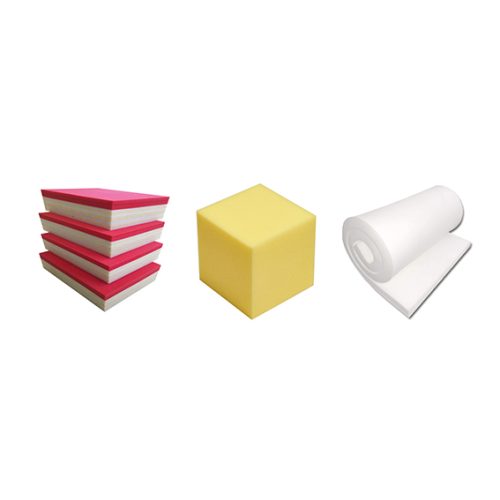1. Adjust the Formulation
Control the water content to not exceed 4.5 parts. If necessary, use low-boiling-point liquid compounds as auxiliary foaming agents to replace some of the water. Ensure that the water content in the formulation never exceeds 5 parts. For low-density foam, the maximum safe temperature rise is 160°C and must not exceed 170°C.
2. Strictly Control the Measurement Accuracy of Each Component
During continuous block foam production, adjust the discharge speed of the mixing head and the speed of the conveyor belt to ensure coordination. Avoid scenarios where unfoamed material flows beneath already foaming material due to a slow conveyor belt or excessive discharge, which can prevent proper foaming and cause collapse. Collapsed material is less likely to produce localized “gas pockets,” leading to localized heat buildup and an increased risk of scorching. In actual production, poor process parameters can result in small yellow scorch lines at the bottom of foam blocks.
3. Avoid Compressing Newly Produced Foam
Compressing foam before it is fully cured can affect the foam network and structure. This also prevents heat accumulation due to compression, reducing the risk of spontaneous combustion of new foam. During the most sensitive phase of foam rise, operational errors and vibrations, such as sudden movements from tight conveyor belt chains or excessive folding of isolation paper and conveyor belt shaking, can compress immature foam and lead to scorching.
4. Strictly Follow the Curing and Storage Procedures
The curing process of new foam is a high-risk period for fire accidents. Due to the high internal temperature and long duration of heat dissipation in large foam blocks, it typically takes 30-60 minutes to reach the highest internal temperature, and 3-4 hours or longer for it to start cooling down. During this time, new foam has already left the production line and entered the curing and storage phase, which can be easily overlooked. Without proper monitoring measures, fires can easily occur. Reports have shown that when producing block soft foam with a density of 22kg/m³ using polyol with a molecular weight of over 5000, 4.7 parts water, 8 parts F-11, and a TDI index of 1.07, light yellow smoke was observed 2 hours later. Although the external temperature of the foam was not high, the interior was at a dangerous initial decomposition stage, with temperatures around 200-250°C, indicating the beginning of spontaneous combustion.
5. Preventing Foam Spontaneous Combustion
Newly produced foam should be cured and stored, stacked no more than 3 layers high, with a spacing of more than 100mm between layers, and preferably stored separately. The curing and storage phase should have dedicated personnel for enhanced monitoring, such as measuring the internal temperature of the foam every 15 minutes for at least 12 hours or longer before normal storage. For foams that may generate high temperatures, large foam blocks should be cut horizontally (e.g., 200mm thick) to facilitate heat dissipation. When smoke or spontaneous combustion is detected, use water spray or fire extinguishers, and avoid moving the foam or opening doors and windows indiscriminately to prevent increased airflow, which can exacerbate the fire.

